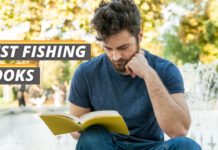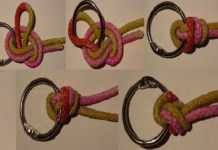Walleyes are finicky creatures and tricky to catch. But, fear not. Our trolling for walleye guide includes the ideal rig, trolling equipment, and lures so you can finally start reeling in walleyes on your boat!
Walleye Trolling Set Up
Before renting a boat and heading out to the waters, do you have the right or set up for a successful walleye trolling? If not, here is a rundown of what you will need:
- Trolling rods
- Trolling line
- Line counter reels
- Rod holders
- Laner boards
- Lures
- Lure depth chart
- Rig – bottom bouncer rig, a lindy rig, or a three-way rig
Line Counter Reel
A line counter reel measures the length of line you should let out. Many veteran anglers pairs the line counter reel with a lure depth chart for maximum efficiency. This is because the depth at which walleye are is likely to shift depending on the season.

Trolling Rod
The best rod for trolling walleye should be heavy enough to handle the weight of planner boards, heavy sinkers, and, of course, walleyes.
The optimum length should be at around 6 to 10 feet. If you intend to pair it with a planner board, look for a rod at least 8 feet. As for the rod material, you can opt for graphite models but ensure that it has medium power or medium-heavy rating. This will give the rod enough backbone and a moderate action taper to give the top half flexibility.
Trolling Line
When trolling for walleye, use a 10-12 pounds monofilament line. It offers an exceptional knot strength, is barely visible underwater, has a thin radius, controlled stretch, offers you consistency, and is abrasion-resistant. Even big-sized walleyes are not able to break free of this line!
Planer Boards
Planner boards are mostly used in fresh or shallow water trolling. Like downriggers, they allow you to use multiple lines and drop your baits into the water. With dual boards, you can use up to five lines on each side which comes in handy, especially on choppy water.

Walleye fishing, however, requires inline boards. Inline planners are attached to the fishing line directly, making the board the direct strike signaler. Whichever planner you use, ensure the planner is 50 feet ahead of the weight with the lure at least 50 feet from the weight.
Lures
Crankbaits are the best walleye trolling lures you can use. Keep in mind that walleyes have low-light vision and seek cover in deeper water. And, when the lure goes deeper into the water, the intensity of its color is more muted.
If a lure disappears in just six inches of water, this means you’re going to create sharp vibrations while trolling. Choose fluorescent colors, red, chartreuse, and yellow, if the lure is still visible about 12-18 inches underneath the water. If you are trolling for walleye in clear waters, perch or shiners are suitable.
Lure Depth Chart
Since walleyes hang out in deeper water, a lure depth chart gives you the highest chance of finding and maintaining the depth you need to drop your line. Keep in mind that speed, temperature, light intensity, clearness of water determine the depth at which you drop your walleye trolling lures.
Rig for Walleye Trolling
There are three types of rigs that you can use when trolling for walleye. These are the bottom bouncer rig, lindy rig, and three-way rig. These three are ideal for trolling for walleye because they cover a huge area and can keep your lure as close as possible to the bottom.
Bottom Bouncer Rig
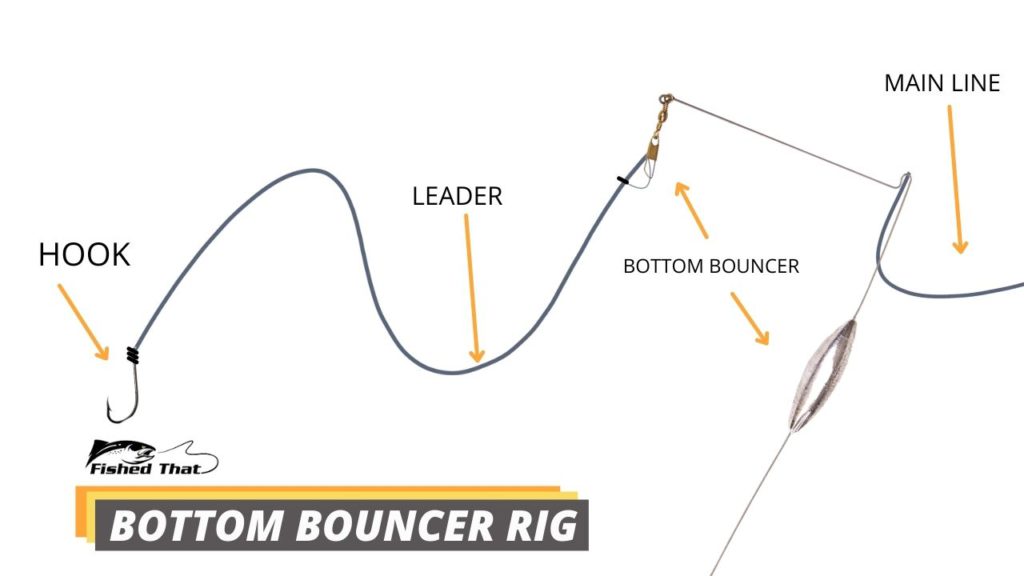
This rig has an L-shaped wire with a bullet weight right down the middle, allowing trolling along the bottom while avoiding snagging rocks.
How to Make a Bottom Bouncer Rig:
- Tie the mainline to the corner notch at the L of the bottom bouncer using a double uni knot or a Paloma knot.
- Attach the leader to the bottom bouncer’s other arm using the attached snap swivel.
- When using crankbaits or other walleye trolling lures apart from a worm, you need to tie a leader of 3-6 feet with a looped end attached to the snap swivel.
Lindy Rig
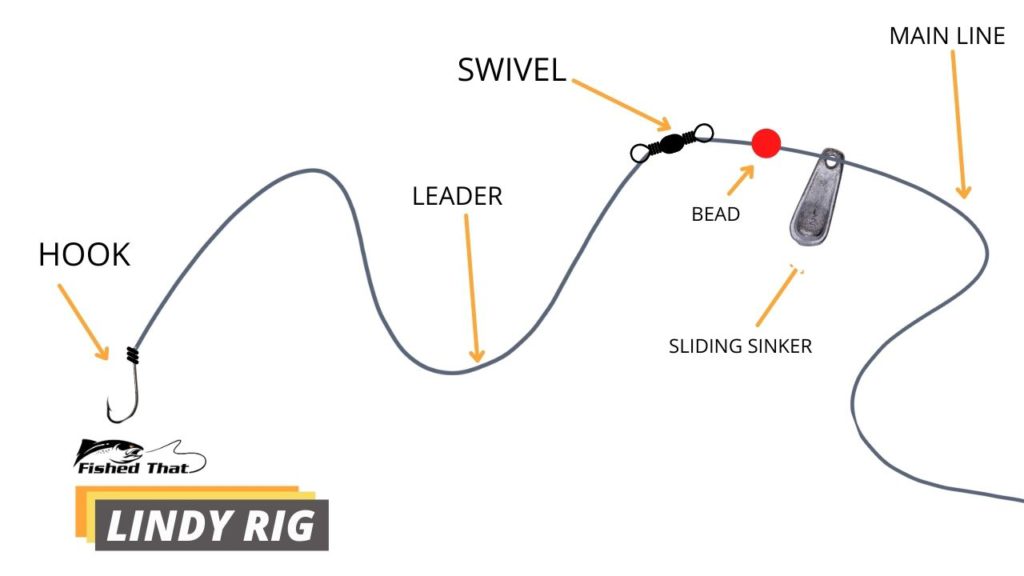
The lindy rig is a simplified version of the bottom bouncer rig. Instead of an L-shaped bottom bouncer wire, it has a leader connected to the mainline by a swivel and a sliding weight. The swivel is in place to prevent the sinker from sliding and crashing on the leader. And, between the sinker and the swivel runs a bead that prevents the sinker from getting stuck onto the swivel.
How to Make a Lindy Rig:
- Thread the key line through the plastic bead and sinker to tie a lindy rig.
- Tie the line to a barrel swivel using a double uni knot.
- Tie a leader, 2-5 feet long, to the lure or hook
- Link the second eye of the swivel to the end of the leader.
Three-Way Rig
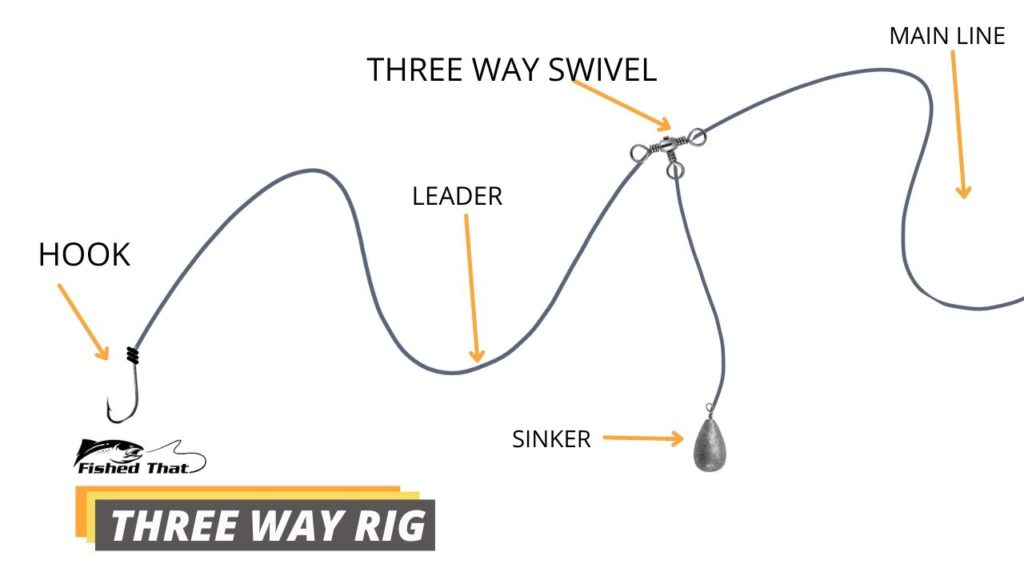
This rig is a hybrid version of the bottom bouncer and lindy rig. As its name suggests, it has a three-way swivel that is normally tied to two leaders – one tied to the sinker and the other on a hook. This configuration enables you to bait at a higher level off the bottom which is helpful for times when the walleye’s activity is a few feet off the bottom.
How to Make a Three-Way Rig:
- Tie the main line to a three-way swivel.
- Next, tie the two leaders onto the remaining two eyes of the swivel. One of which needs to be 2-3 feet in length and tied to the sinker on the other side. The second one should be 3-7 feet long and tied to the lure or hook.
- The leader connected to the weight needs to go lower since the sinker is only used when it gets snagged on the bottom.
Trolling Speed for Walleye
Trolling speed is an important factor, especially if you want to get that proper haul.
- Spring: 0.5-1mph. Slower speeds are necessary since cold waters make the walleye sluggish or slow, and don’t put up a chase.
- Summer: 1.8-2.2 mph. You can lower the speeds if using live bait.
- Fall: 1.3–1.8 mph.
Trolling for Walleye FAQ
What Lures to Use for Trolling?
Some of the best lures are Northland whistler, Eire dearie, Bomber Long A, and Rapala Shad Rap. Keep in mind that you’ll need to consider other factors like season and location.
Is Trolling the Best Way to Catch Walleye?
Trolling allows you to cover more area, making it very effective for catching walleye. However, you need to keep track of your bait, know when to change speed, and don’t be shy of going shallow.
What Is the Best Lure Color for Walleye?
There is no best lure color for walleye. Other factors like location and water clarity play a more significant role than lure color. If you are trolling in clear waters, green-colored lures work best. But, remember, as the lure goes deeper, the less visible it will become.
Catch a Walleye
Trolling for walleye is a fun experience! It is challenging at first, but once you get the hang of it, you will spend most of your fishing trips catching walleyes! Remember, you need to ensure your walleye trolling setup is functioning properly and factor in the season, location, and water visibility.
Table of Contents

